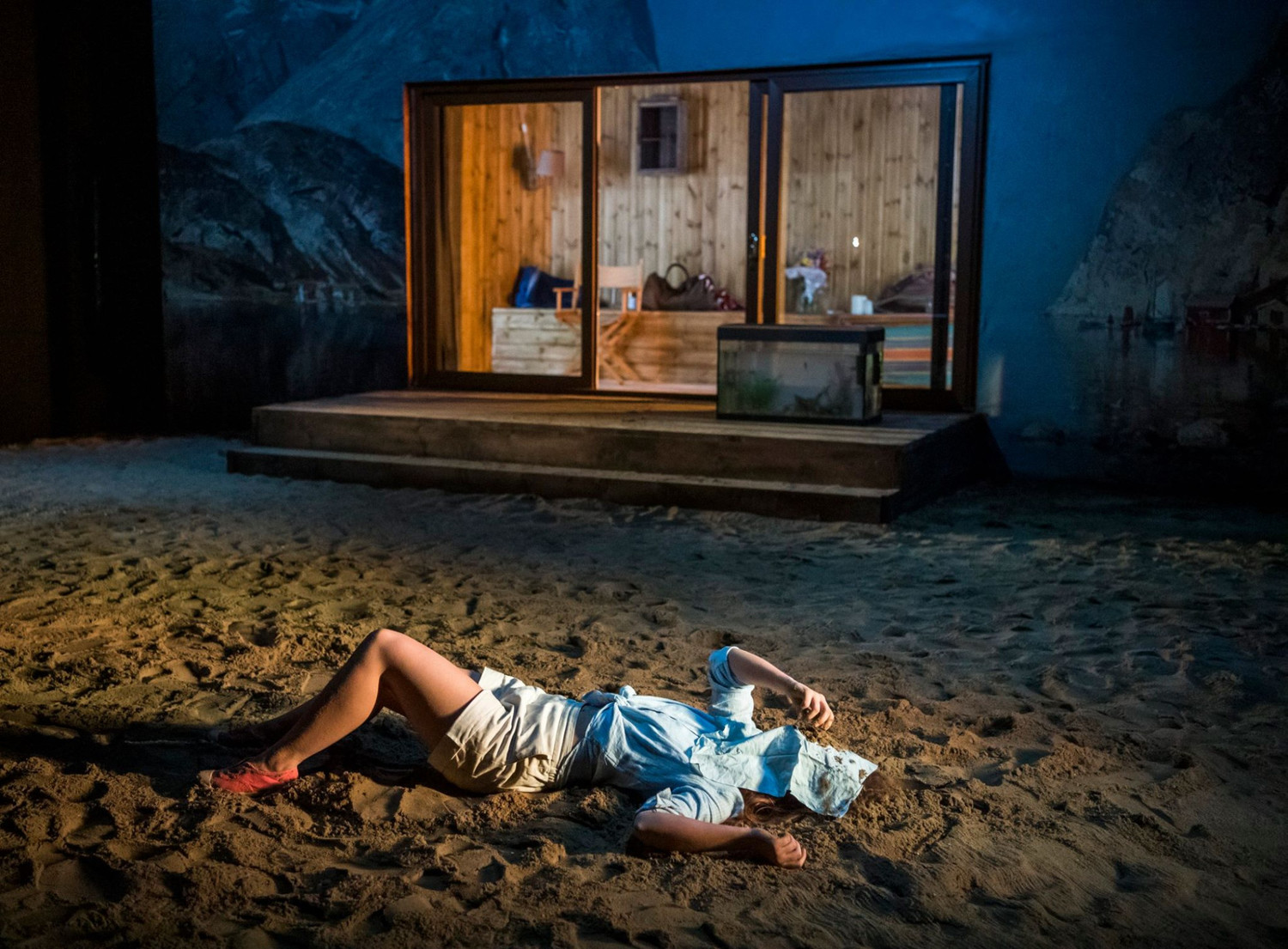Review: THE LADY FROM THE SEA, The Print Room

![]()
The Print Room at The Coronet is hosting a slick and melancholic bilingual revival of Henrik Ibsen's The Lady From The Sea produced by the venue in their first collaboration with The Norwegian Ibsen Company.
The playwright shocked his audiences when he premiered it in 1889 with his representation of family and defiance of societal norms. Now director Marit Moum Aune opens up the narrative and puts the three women centre-stage in an in-depth analysis of independence and internal conflict.
Ellida (Pia Tjelta) is haunted by her past and struggling with being Doctor Wangel's (Adrian Rawlins) second wife. His daughters Bolette (Marina Bye) and Hilde (Molly Windsor) grapple with accepting her into their nucleus and she feels like an outsider in her own home. When Arnholm (Kåre Conradi), Bolette's former teacher, arrives on the doctor's invitation, there's a shift in their precarious harmony and a profound reflection on emotional ties is triggered.
Moum Aune freezes time and presents the play as enclosed in a metaphorical fishbowl. By mixing naturalism and symbolism in her craft, she highlights the writer's modern thinking and focuses on the relationships (both romantic and familial) between the characters. She layers the direction, sprinkling metaphors in the actor's physicality and putting on cold but delicate visuals.
Difficult and very personal conversations are carried out in Ibsen's native Norwegian, with surtitles projected onto the scenery. This directorial choice comes off as smooth and sensible, as Moum Aune drags out the characters' most intimate strife and appeals to their origins. The decision also adds authenticity to the production, at the same time managing to leave it accessible and relatable to a broad public.
Set designer Erlend Birkeland gives the stage a rather bucolic aura with unwavering cold lighting curated by Simon Bennison. He covers it with sand and pebbles while a painted backdrop depicting a Norwegian landscape looms over the scene, reminding the audience of the influence of the setting in Moum Aune's production. A fish tank with live goldfish on the far right corner works as a direct link to the director's (and Ibsen's own) analogy, cutting to the chase and serving as a perhaps too-easy reference.
The cast are superb and work as a finely tuned machine. Tjelta tactfully brings out the inner turmoil and discord of the titular character while Rawlins' rational approach acts as balance to her emotions. Bye and Windsor become two faces of the same medal as the daughters, they yearn emancipation and yet strive to be accepted by others, while Conradi's teacher alternates moments of confidence with slight hesitance.
As the sickly (and sometimes creepy) Lyngstrand, Edward Ashley is lanky and justly awkward with jelly sandals at his feet and inelegant attitude. Lastly, Øystein Røger takes over the stage with his two interventions as The Stranger who stirs Ellida.
The Norwegian Ibsen Company's first co-production with The Print Room is an exquisite gift to London's multiculturalism as is the choice to offer this version of Ibsen's The Lady From The Sea to its theatrical panorama.
The Lady From The Sea runs at The Print Room until 9 March.
Photo credit: Tristram Kenton
Videos
